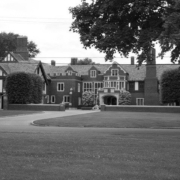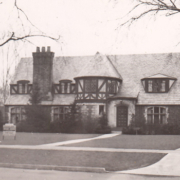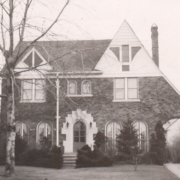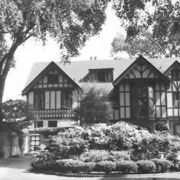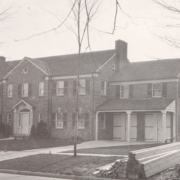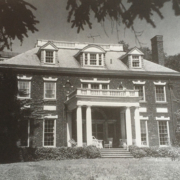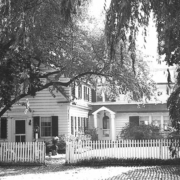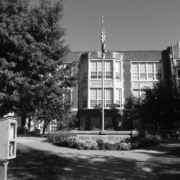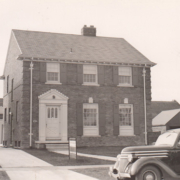Historical Architecture of Grosse Pointe – 15420 Windmill Pointe
Last week we stopped by arguably one of the most prestigious homes in the Grosse Pointe communities – 15520 Windmill Pointe, designed by Alpheus W. Chittenden in 1903, for John B. Ford. This week we stay on Windmill Pointe to visit 15420 Windmill Pointe, designed by noted local architect Robert O. Derrick for John Bell Moran. Completed in 1927, “Bellmor” is a 12,000 square foot English Tudor style mansion.
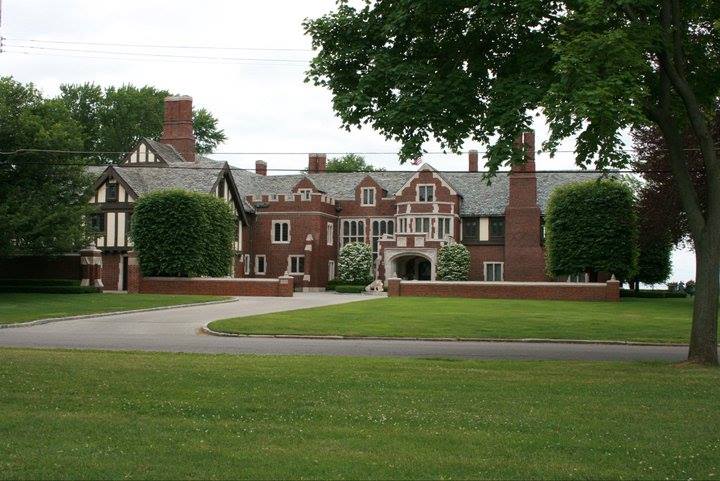

The Moran’s have been a prominent family in Detroit for nearly 300 years – they were one of the early French families who settled in Detroit in the early 1700’s. John B. Moran was part of the family who in 1750, had taken ownership of one of the long, thin ribbon farms in the area and subsequently became huge landholders.
During the 1920’s John B. Moran and his wife Serena Murphy Moran, who were newly married, wanted to build a lavish home on the land Johns father had given to them as a wedding gift. At the time they were living on Iroquois in Indian Village. Mr. Moran, (born in Michigan in 1886) was one of the founders of General Motors, he was also vice president of the Pacific Lumber Co., and an officer of Simon J. Murphy Co., the firm that owned and operated the Penobscot Building in Detroit.
The young wealthy couple selected leading residential architect Robert O. Derrick to create an English Tudor mansion on Windmill Pointe. The Moran’s moved in April 1929. Their new house was certainly impressive, it is reported that it was modeled after the sixteenth century English manor house, Compton Wynyates (located in Warwickshire) – one of the Moran’s favorite properties they had seen during a visit to England in the early 1920’s. Image courtesy of: Wikipedia.
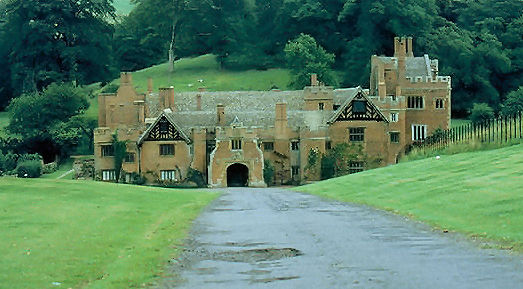
Derrick designed the property to be built from cut stone and brick, ensuring care and detail were taken on every part of the residence, including the magnificent stone carvings, which includes the Griffon “the first ship from the old world to enter Lake St. Clair, which is represented in limestone above the portico.” Source: Grosse Pointe Historical Society. Images courtesy of priceypads.com
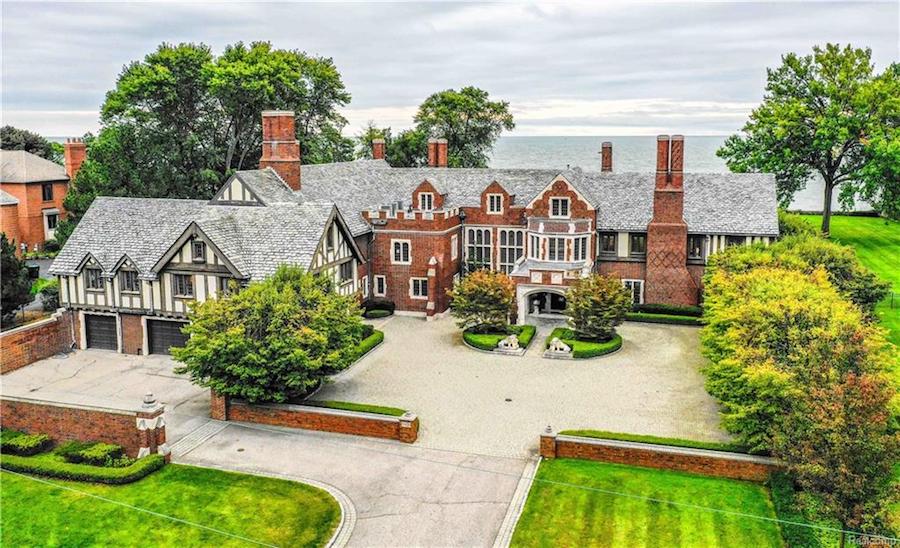

The property has 33 rooms, 16 bathrooms and a six-car garage. We understand from research by the Grosse Pointe Historical Society that John Moran wanted parts of the house to represent the ancestries of the Moran and Murphy families, and so the coats of arms of both families were inset in the stairwell windows. French Fleur-de-lis and Irish Rose patterns, representing the ancestries of the Moran’s, were also repeated throughout the home in such places as the pressed plaster 12 ft high ceilings and the beautifully carved oak paneling. The intricate woodwork had amazing detail, featuring elements referred to as folded linen, while many of the doors had arched entryways that were also made from wood. Images courtesy of priceypads.com
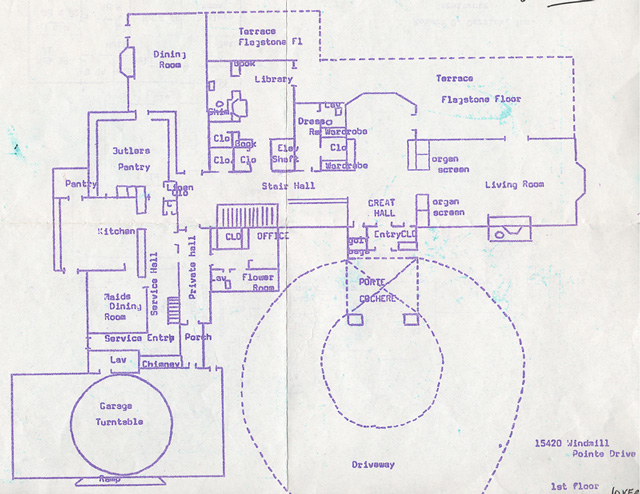

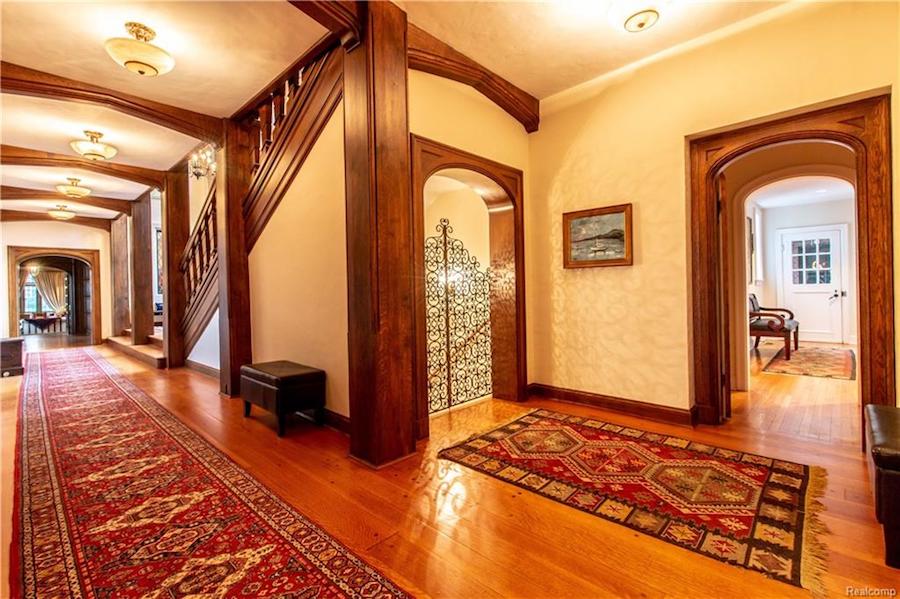
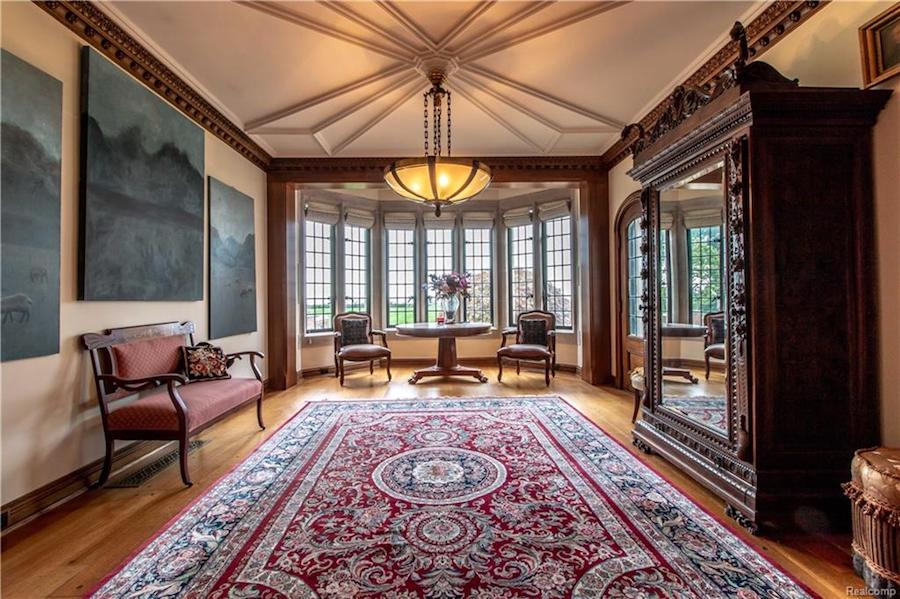
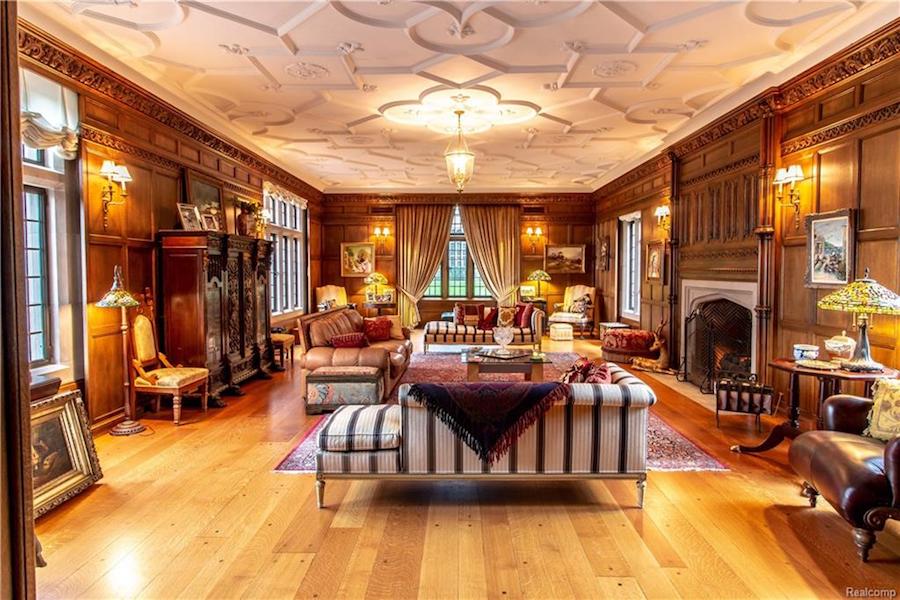
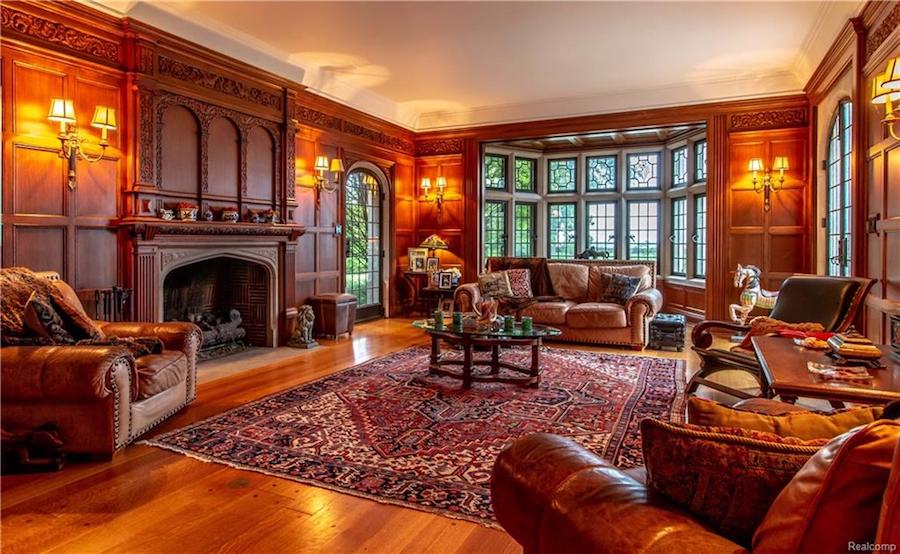
It was reported the Moran’s hired G. Macstay Jackson to decorate the interior pf the property with English antiques, silk brocade, and velvet fabrics. Family portraits decorated the walls, while oriental rugs covered the first floor, the wide staircase, the second story hall, and John Moran’s bedroom. It was reported Moran and his wife had separate bedroom suites, Serena’s room was decorated with French furniture, a Napoleonic style French bed and French prints hung on the walls. While John Moran’s room, known as the “monks’ cell,” was typically English, the furniture was carved with linen fold panels in a sand-colored wood, while a narrow bed, desk, and a long sideboard completed the room. Outside the gardens were elegant, and the one-and-a-half-acre property was complimented by stunning views of the lake. Source: Grosse Pointe News (April 1990). Image courtesy of priceypads.com
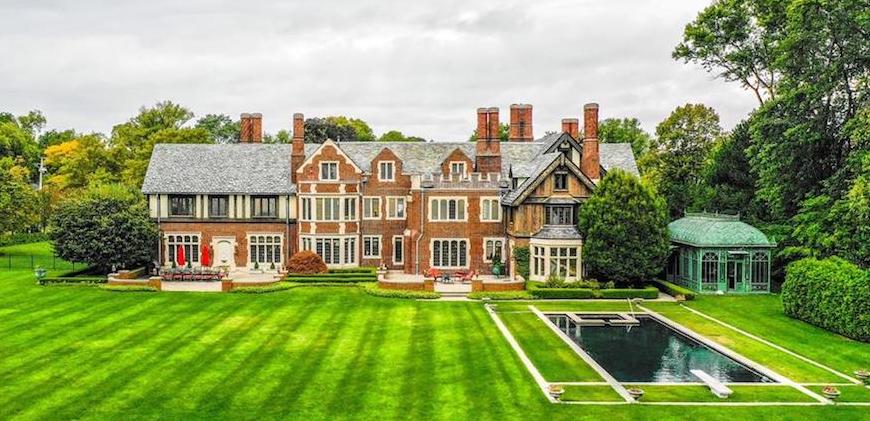
The article in the Grosse Pointe News also explains that before the depression the family employed a butler, a chauffeur, a governess, a cook, three maids, two laundresses, and a gardener to help the house run smoothly. The Moran’s and their four children (Charles; Bill; Serena; and John) lived at “Bellmoor” for twenty-four years.
After sitting empty in the 1970’s it is alleged “Bellmor” narrowly avoided demolition after the owner could not secure a demolition permit.” Source Grosse Pointe Historical Society. In 1999, Mr. and Mrs. Agley moved into the property and loving restored the home. The wood was almost black from years of neglect, and over a period of eighteen months the Agley’s refinished many of the original features. Thus, returning “Bellmor” to the masterpiece it had once been and always will be.
*Photos courtesy of the Higbie Maxon Agney archives unless stated.
** Research, information, and data sources are deemed reliable, but accuracy cannot be fully guaranteed.
Written by Katie Doelle
Copyright © 2024 Katie Doelle

